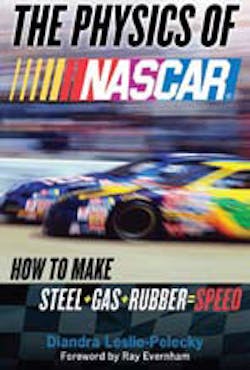That was fast! CGI approved to race
All NASCAR engines have CGI blocks,” Diandra Leslie- Pelecky points out in her new book, The Physics of NASCAR. She explains that “CGI’s higher strength means that parts can be made with thinner walls, which produces finer detai ls and l ighter parts.” The physics professor from the University of Texas at Dallas visited several NASCAR racing teams’ workshops, and attended several races during 2007, to learn more about what goes into a successful racecar. She packed much of her newfound knowledge into the book, which was published in February.
She points out that NASCAR requires teams to use blocks, cylinder heads, and intake manifolds from approved manufacturers, and also limits the modifications engine builders can make to those parts.
In a review of engine materials, though, she explainds that cast iron had been specified to keep down the cost for NASCAR race teams. Gray iron, however, tends to be brittle due to the graphite flakes that occur throughout a casting. Leslie-Pelecky then explains about the development of a more ductile form of cast iron and its problems as a potential engine material.
“The problem is that ductile iron is a little too ductile. Although it is more crack resistant and stronger than gray iron, ductile cast iron is harder to cast into parts and it isn’t as good at dissipating heat as gray cast iron,” she writes.
“An extremely narrow range of magnesium concentration produces a compromise: wormlike graphite structures that look like pieces of a miniature coral reef. The randomly oriented pieces interlock within the iron matrix. This compacted graphite iron, or CGI, is one-and-a- half to two times stronger than gray cast iron, and dissipates heat better than ductile iron. CGI is also twice as resistant to metal fatigue (weakening due to repeated cycles of heat and stress) as gray cast iron.
“CGI was discovered about the same time as ductile cast iron, but hasn’t been used in production until recently because the magnesium concentration has to be controlled to within a few thousandths of a percent. A onepound addition of magnesium has to be weighed to an accuracy within thousandths of an ounce. The only way to achieve this level of accuracy is with computer-controlled manufacturing processes,” Leslie-Pelecky concludes.
